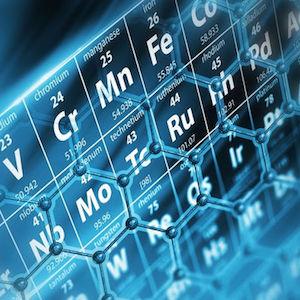By Jeanna Bryner, Live Science
Four new chemical elements now have official names and symbols, the International Union of Pure and Applied Chemistry (IUPAC) announced this week.
After a five-month review, IUPAC chemists have approved the four names for superheavy elements 113, 115, 117 and 118 proposed by the elements' discoverers. Such superheavy elements, whose atomic numbers indicate how many protons reside in each nucleus, don't occur naturally in nature, so they must be created in labs.
Following tradition, the names needed to honor a place, geographic region or scientist, with the name endings following specific protocols related to each element's placement on the periodic table of elements.
Here are the new names:
- Element 113: nihonium (Nh)
- Element 115: moscovium (Mc)
- Element 117: tennessine (Ts)
- Element 118: oganesson (Og)
The IUPAC announced in January that the four elements would land on the periodic table, though the elements remained nameless. Then, in June, the IUPAC announced the new names, which had yet to be finalized. [Elementary, My Dear: 8 Elements You've Never Heard Of]
The five-month window was meant to give the public a chance to make suggestions or raise concerns about the element names, considering these names will be used around the world, in many languages, Cleveland Evans, a professor of psychology who studies names and naming at Bellevue University in Nebraska and chairs the Name of the Year committee for the American Name Society, told Live Science in June.
The proposed names seem to have sailed through unscathed, though that doesn't mean interest was lacking.
"Overall, it was a real pleasure to realize that so many people are interested in the naming of the new elements, including high-school students, making essays about possible names and telling how proud they were to have been able to participate in the discussions," Jan Reedijk, president of the IUPAC's Inorganic Chemistry Division, said in a statement. "It is a long process from initial discovery to the final naming, and IUPAC is thankful for the cooperation of everyone involved. For now, we can all cherish our periodic table completed down to the seventh row."
Scientists with Japan's RIKEN Nishina Center for Accelerator-Based Science proposed the element name nihonium, which is one way to say "Japan" in Japanese and means "the land of the rising sun," according to the IUPAC. Kosuke Morita and his colleagues created the elusive element on Aug. 12, 2012, after colliding zinc nuclei together in a thin layer of bismuth.
Like other superheavy elements, after 113 was created, it quickly decayed, ultimately turning element 113 into 111, and then 109, 107, 105, 103 and finally into element 101, according to Morita.
Names for elements 115 and 117 were proposed by their discoverers at the Joint Institute for Nuclear Research in Dubna, Russia; the Oak Ridge National Laboratory in Tennessee; Vanderbilt University in Tennessee; and Lawrence Livermore National Laboratory in California. Both element names, moscovium and tennessine, honor regions where experiments linked to creating the elements took place.
The name oganesson, for element 118, honors Yuri Oganessian "for his pioneering contributions to transactinide elements research," IUPAC officials said, referring to elements with atomic numbers 104 through 120. "His many achievements include the discovery of super-heavy elements and significant advances in the nuclear physics of super-heavy nuclei, including experimental evidence for the 'island of stability,'" an idea suggesting that super-heavy elements can become stable at some point in their existence.
Though there is no certain limit for the number of protons that can be stuffed into an atomic nucleus, the higher the number, the more unstable the element, chemists say. Now that the seventh row (called a period) of the periodic table has been completed with element 118, according to the IUPAC, chemists will continue to search for heavier elements beyond that.
This article was originally published on Live Science.



